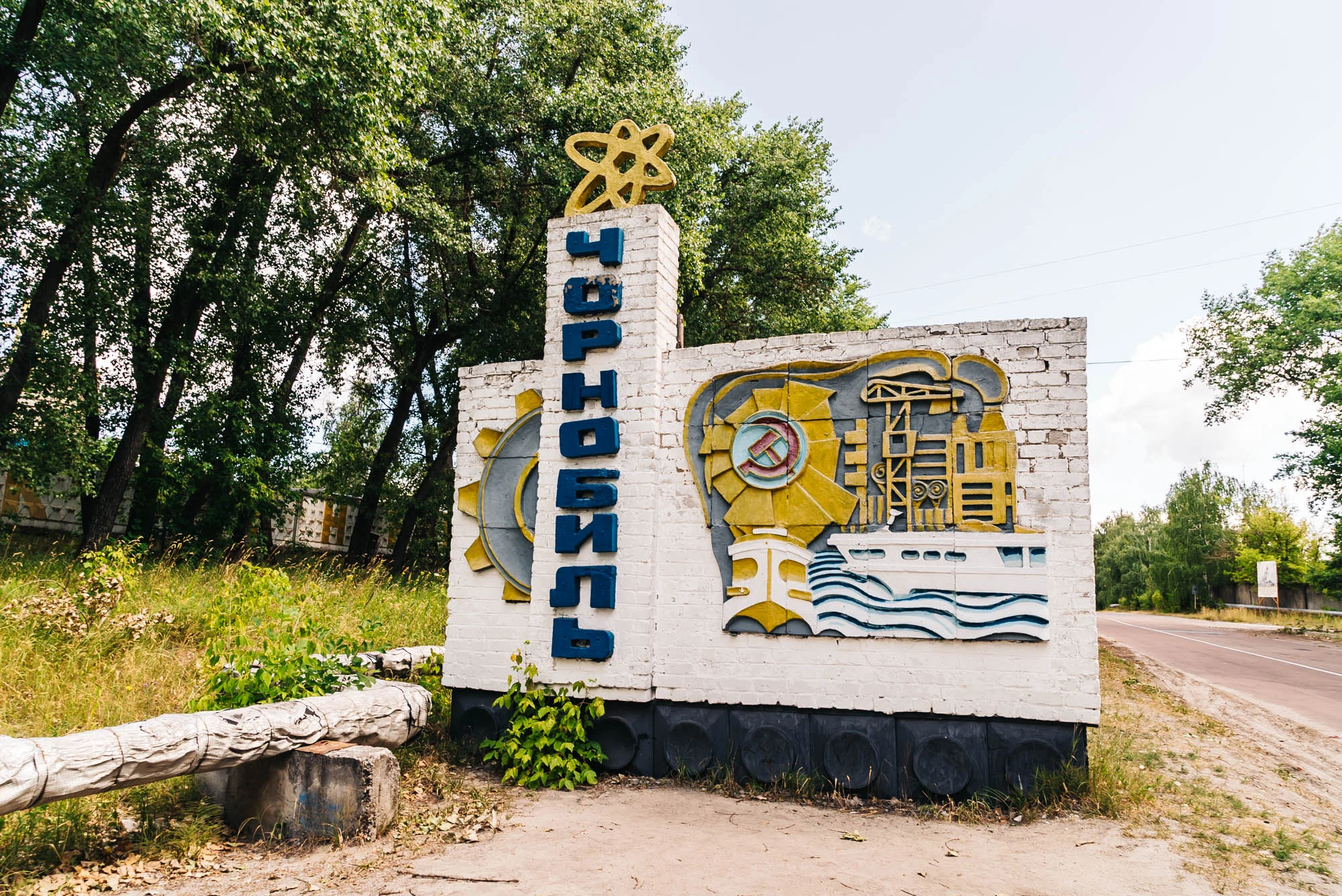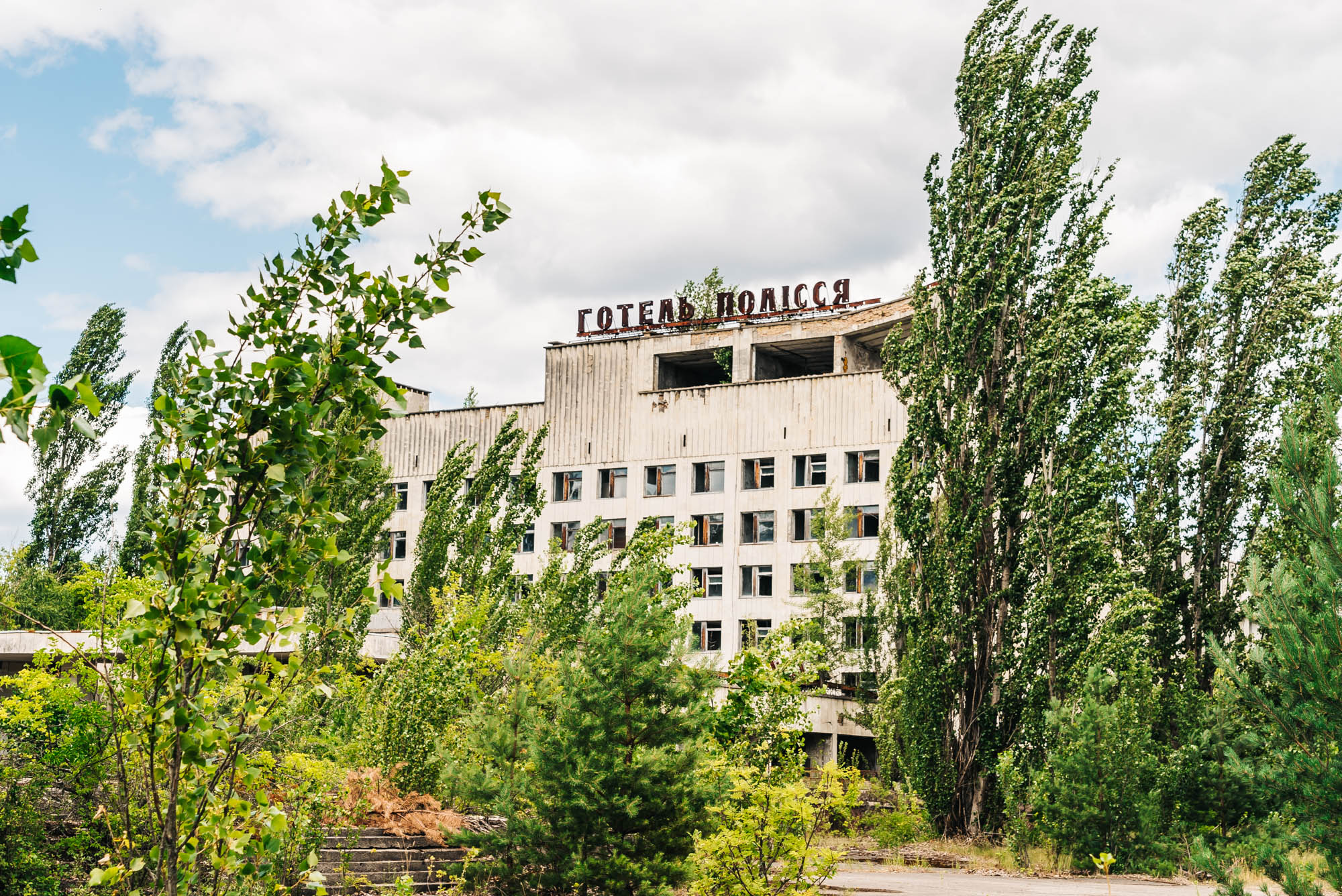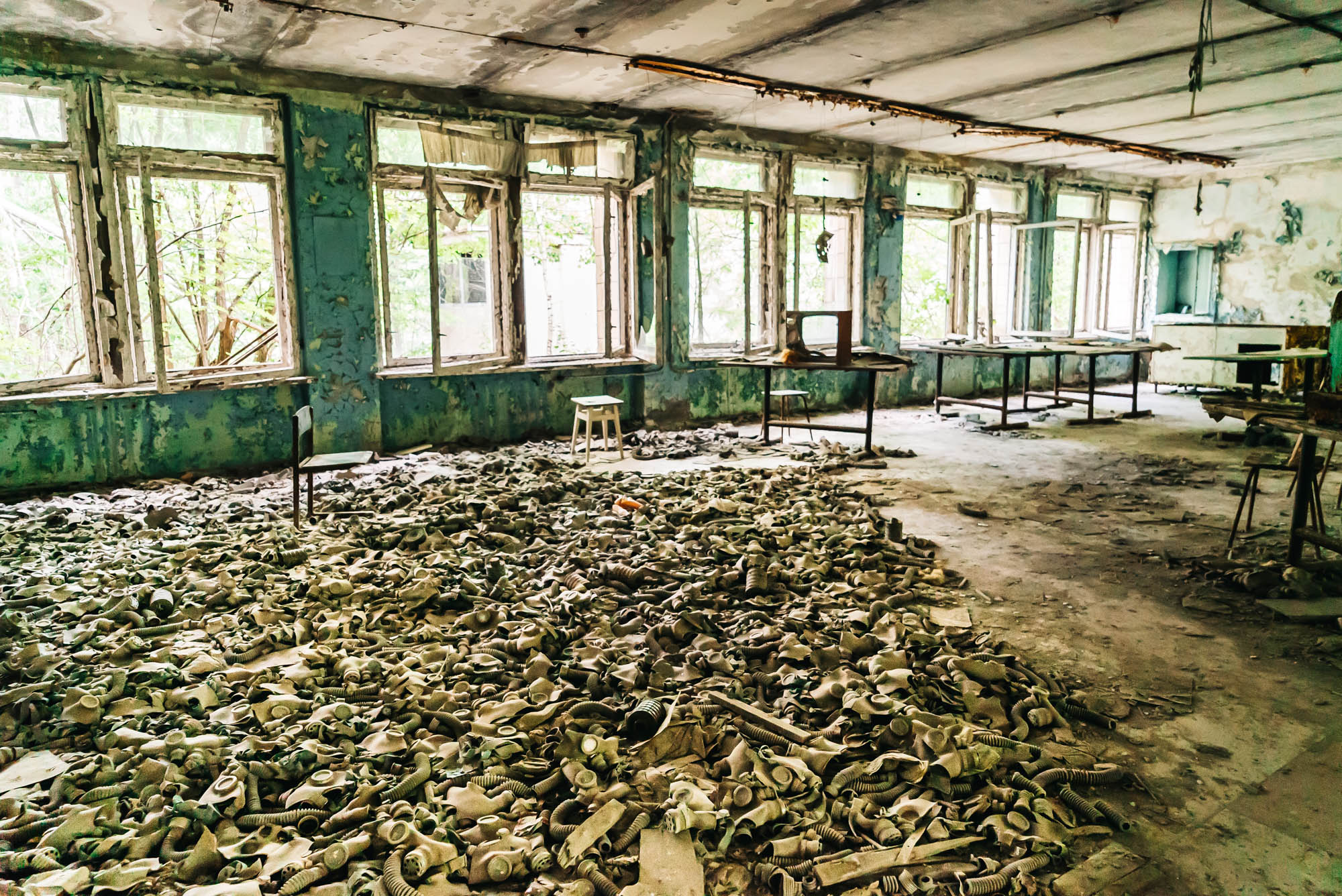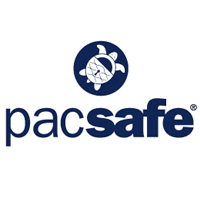What It’s Like To Visit Chernobyl as a Solo Female Traveler
/Ever since I heard about Chernobyl, I have been fascinated by the catastrophic event. When I first booked this trip, almost everyone thought I was crazy. I was prepared to come here solo because I knew I wouldn’t have very many friends or family that would want to come with me (understandably). Of course, now Chernobyl has grown in popularity after the HBO miniseries so people are becoming more open to the idea of visiting, but at the time I booked my ticket the show had not yet aired. While I was visiting Chernobyl, I had a lot of friends message me and asking a ton of questions about the site. Everyone was curious about my experience with the main question being if it’s safe to visit. So, here are all the answers in this post.
HISTORY
First, a little bit of history. The Chernobyl disaster happened on April 26, 1986 at 1:23 in the morning. The employees at the plant were ironically running a safety test and one of the reactors exploded. According to several sources, it was due to a severely flawed Soviet-era reactor design, combined with human error.
At first, Ukraine, then part of the Soviet Union, downplayed the whole situation and said it was just a fire that needed to be put out. Eventually, other countries started getting warnings on the levels of radiation in the air and Sweden, which is almost 1,000 miles away, discovered that it was coming from Chernobyl.
Chernobyl entrance sign
36 hours later, the entire city of Pripyat, located next to Chernobyl, was ordered to evacuate and everyone was only allowed to take one suitcase with them. They were also told that they would be able to return to their homes a few days later, but that never happened. They never returned to their homes. As a result, the city has become abandoned and things were left as they were as the evacuation was very sudden.
SAFETY
I did extensive research on whether or not Ukraine was safe to visit as a solo traveler and whether or not it was safe to visit Chernobyl as far as the radiation levels. The answer to both was yes, it is safe, although there are some areas you cannot and should not visit.
Kiev, the capital of Ukraine, is very safe and I did not feel threatened at all as a female solo traveler. I flew into Kiev and took a tour to Chernobyl the next day. The tour was well-operated and organized with English speaking guides. Although most of Ukraine is safe, there are parts in the far east you do not want to visit as there is a war going on (as of July 2019).
Pripyat, The abandoned city
As far as radiation in Chernobyl, it still exists, but it is safe to visit for 2-3 days. On the tour, it was mandatory to wear long sleeves, long pants, and closed-toe shoes to avoid contamination from the ground. There are other precautions we needed to take such as not to touch anything or to take a shower and wash our clothes after the tour, but with that being said, these are just extra measures to take. According to scientific researchers, the dose of radiation you are likely to receive during a day tour in the Chernobyl exclusion zone is even less than a transatlantic flight. So essentially, I was exposed to more radiation flying from the US to Europe.
If you’d like to learn more about radiation exposure levels, these articles may enlighten you:
Radiation 101
How much radiation is dangerous?
Radiation Dosage Chart
A Quick Guide to Radiation Exposure
Keep in mind that some articles measure in millisieverts and others in microsieverts.
THE TOUR
You are only able to visit Chernobyl on a guided tour. There were several tour companies to choose from, all with great reviews, but Solo East Travel seemed to have more options on the times and days I was visiting. It was super easy to book my tour on their site and they were very responsive with any questions I had about the tour. You can choose from several types of tours like the One Day Tour, Two Day Tour, or a Private Tour starting from $99 USD. I chose to do the One Day Tour.
I met my tour guide, Tanya, in the city center of Kiev and we all hopped on a minibus with about 15 people. It’s a 2-hour ride to Chernobyl from Kiev and on the way, we stopped by a convenient store and watched several documentaries about Chernobyl. There’s also free WiFi on the bus but it worked about half of the time.
Solo East Travel Mini Bus
Grab some snacks at the Ukrainian Convenient store
ENTERING CHERNOBYL
When we arrived at the Chernobyl checkpoint, I couldn’t help but get excited. It’s been on my bucket list to visit this place and I finally decided to do it after years of contemplating. This was once an area that was forbidden to enter and now it’s open to the public for everyone to see, so there’s something thrilling about that.
It took about 30 minutes for the guards to check all of our passports and Tanya handed us our paperwork we needed to carry with us at all times while we were within the Chernobyl Exclusion Zone. We then got off the bus to get our dosimeters. This measures the amount of radiation dose we receive while in the exclusion zone and we wore it around our neck for the entire tour.
Chernobyl Checkpoint
Our first stop was within the 30 km Zone and we walked through an abandoned village. I rented a Geiger Counter to see how much radiation was actually around me. It started at around 0.16 microsieverts. And that’s considered pretty normal. It’s impossible to have 0 because there is always some form of natural radiation. In comparison, London measures at .108.
We walked by a couple of abandoned buildings and stopped in front of a building that used to be a grocery store. We were allowed to go inside this one and explore a bit. There was glass everywhere so that’s one of the reasons why they tell everyone to wear thick, close-toe shoes.
An old grocery story in one of the villages of Chernobyl
Palace of Culture (Town Hall)
We moved on and stopped by the “Palace of Culture” which was basically a town hall.
Next, we explored a couple of abandoned houses with an old Soviet car out front. Tanya told us we could go inside and take pictures with it but I think we were all afraid to do that. I mean, I know I was. Our Geiger Counter didn’t go off but it’s better to be safe than sorry. You just never know.
Old Soviet Car
Inside of an abandoned home in Chernobyl
Old letters and newspaper articles in the abandoned home
Exploring the inside of these houses was when it got a little emotional for me. It was sad to see little remnants left behind like books, music notes, and old newspaper articles. Most of the big items from these abandoned buildings are gone because the looters took them all.
Next, we headed to Chernobyl Town for lunch. We made a quick stop at the memorial complex where we saw a tall sculpture and a row of signs with names. At first, we all thought they were names of lives lost. But it’s actually the names of the Chernobyl villages that were lost. A lot of them were so contaminated that they had to be buried underground.
Chernobyl Memorial Complex
Lunch at a cafe in Chernobyl
After our little break, we moved on to the 10km zone and Tanya showed us the first “hot spot”. These are little spots that are highly radioactive and she showed us on her Geiger Counter how the levels went up drastically and the device started beeping. I tested it out for myself. It started at 1.34 microsieverts and then when I put it towards the ground that Tanya showed us, it went up to 10 microsieverts within seconds and started beeping. Pretty crazy.
measuring radiation levels with the Geiger Counter
One of the “hot spots” in Chernobyl
We had some time in this area to explore an abandoned nursery where there were toys, children’s books, and paper crafts left behind. As I was walking down the hall and turned the corner into one of the rooms full of beds, I gasped a little because this was the room I saw often online with pictures of the creepy dolls. This is where the children would take their daytime naps.
Abandoned nursery in Chernobyl
The hallway of the nursery
The creepy dolls of Chernobyl
We got back on the bus and headed towards the nuclear power plants. We drove past a huge cooling tower that was being built for additional reactors. We also saw Reactor No. 5 which was supposed to be completed in November 1986, six months after Reactor No. 4’s explosion. The cranes and machinery were left as is and Tanya told us that one of the cranes just recently crumbled to pieces.
Reactor No.5 in Chernobyl that was never completed
We then drove up to the infamous Reactor No. 4 and it was surreal to see this thing so up close. It’s now covered by a giant sarcophagus to limit the radioactive contamination. They recently built a new shelter around the old sarcophagus that was starting to crumble. This New Safe Confinement (NSC) will last about 100 years. I pulled out the Geiger Counter to see what the levels were like and it only went up to 1.19.
Reactor No. 4 in Chernobyl now covered by the New Safe Confinement
PRIPYAT
We moved on to Pripyat, a city established in 1970 to house the employees of Chernobyl and considered one of the most desirable cities to live in the Soviet Union in the 1980s.
We hopped off the bus for a few minutes at the Pripyat sign and this area seemed to set off my Geiger Counter more than the previous areas we visited. It went up to 5 microsieverts when I pointed it towards an open field.
Pripyat sign
When we got back on the bus, we drove by the Red Forest, which is one of the most contaminated areas in the world today, and Tanya put her Geiger Counter up against the window. It started beeping and the numbers kept on going up all the way up to 30. We weren’t even outside and the radiation was coming through the windows!
Tanya showing us pictures of Pripyat before the catastrophe
Pripyat in the 1980s
Abandoned apartment building of Pripyat
Our first stop in Pripyat was near an old apartment building. Tanya showed us pictures of what it was once like. It’s hard to believe that this was once a thriving city with 50,000 people living here. If you’re interested in seeing photos of everyday life in Pripyat before the Chernobyl disaster, check them out HERE.
We walked by hotels, restaurants and then stopped by a supermarket. Having a supermarket in the Soviet Union at the time was super rare since everything used to be rationed.
Polissya Hotel
Another apartment complex with a huge USSR symbol on the rooftop
Restaurant in Pripyat
Abandoned supermarket in Pripyat
Our next stop was the iconic ferris wheel of the city. Interesting fact I learned from Tanya was that this little amusement park was never used. It was built to celebrate May Day, an annual Ukrainian national holiday to honor workers’ rights and achievements, and was supposed to open to the public a few days after the explosion.
Tanya showed us another hotspot underneath one of the cabins of the ferris wheel. I believe it went up 30 microsieverts.
The iconic ferris wheel of Pripyat
Radioactive cabins of the ferris wheel
The Go Karts of Pripyat that were never used
Next, we moved on to the city’s fitness center. I was actually surprised we were allowed in here because we had to go upstairs to see the basketball court and pool area. I was a little scared going up and down those stairs. I can’t imagine they’ll let all these tourists in here for much longer for safety reasons.
Basketball court on the second floor of the fitness center in Pripyat
Swimming pool inside the fitness center
This facility was still being used after the catastrophe until 1998
Going up and down these old stairs was a little frightening
On our final stop in Pripyat, we explored an abandoned school. Seeing hundreds of children’s gas masks on the floor was frightening. School desks still remained lined up and some text books were left open on the desks. I’m guessing the textbooks were thrown on there by some tourists to get a good photograph.
We walked around Pripyat for about an hour but it seemed like 15 minutes to me. I could have spent hours here exploring everything.
Hundreds of children’s gas masks laying on the floor of an abandoned school in Pripyat
THE RUSSIAN WOODPECKER
Before we headed home, we made one last stop at the Duga, also known as the Russian Woodpecker. Duga was a Soviet radar system used as a missile defense and operated from 1976 to 1989.
The Duga is enormous standing at 85 meters tall (279 feet) and 210 meters wide (689 feet). It’s a set of massive arrays of antennae and each array operated at very high power levels, in some cases as much as 10 million watts.
It was nicknamed the Russian Woodpecker because their random frequency would disrupt radio operations all over the world with a sharp, repetitive tapping noise.
The Russian Woodpecker
FINAL THOUGHTS
I know it’s a little controversial to visit Chernobyl but I’m glad I did it. The guides only take you to the safer areas and each location is a quick stop, no more than 15 minutes. It’s also good to be educated on the seriousness of the explosion and the consequences of the accident.
I was a little intimidated to go solo at first but everything turned out fine. It was a breeze traveling to Kiev and the tour was very well organized. If you have a fascination with Chernobyl like me and contemplating whether or not you should go, I say go for it. There’s not very many places in the world where you can see an abandoned town like this at this scale and see the effects of nature taking over after more than 30 years.
TIPS:
*Make sure to wear clothing that covers your body entirely.
*Chernobyl is safe to visit, but be cautious. Listen to your tour guide. You may be able to touch some things in the 30 km zone but do not touch anything in the 10 km zone. To be extra cautious, don’t touch anything. I chose not to touch anything during the tour if I could help it.
*Try to visit during spring or fall. During the winter months, you may not be able to see things as clearly because everything will be covered in snow. During the summer months, it may get really hot while you’re walking around in long sleeves and long pants.
*If you’re looking for a place to stay in Kiev, InterContinental Kyiv is fantastic!





























































